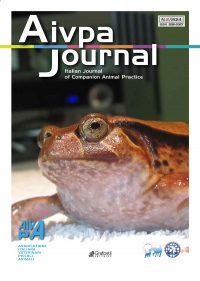Il cane non vedente: approccio clinico, diagnostico e terapeutico
Parte terza
Blind dog: clinical, diagnostic and therapeutic approach (third part)
Authors
Chiara Simonini, DVM
libero professionista, Reggio Emilia;
Barbara Simonazzi, DVM
Dottore di ricerca in Oftalmologia, Ricercatore Dipartimento di Scienze Medico Veterinarie, Università degli studi di Parma
Summary
In this third part we will debate about pathologies of ocular fundus that lead to blindness. We can examine the ocular fundus by direct and indirect ophtalmoscope, it consists of retina, choroid and optic disc. The optic disc is in direct continuity with optic nerve. During ophtalmoscopic exam we can observe the tapetal area with tapetum lucidum, nontapetal zone, a junction area, vasculature, and optic disc. Anomalies of the fundus appear in varied manners: variances in tapetal reflectivity, alteration in pigmentation, different vascularization and bleedings. In this work we will consider the main pathologies able to modify the normal aspect of the fundus. Vision lost can also derive from post-retinic causes whenever something interrupts optic path from the eye to cerebral cortex. We will also focus on main pathologies of optic nerve.
Keywords
retina, optic nerve, CEA, PRA, SARD, retinal detachment


